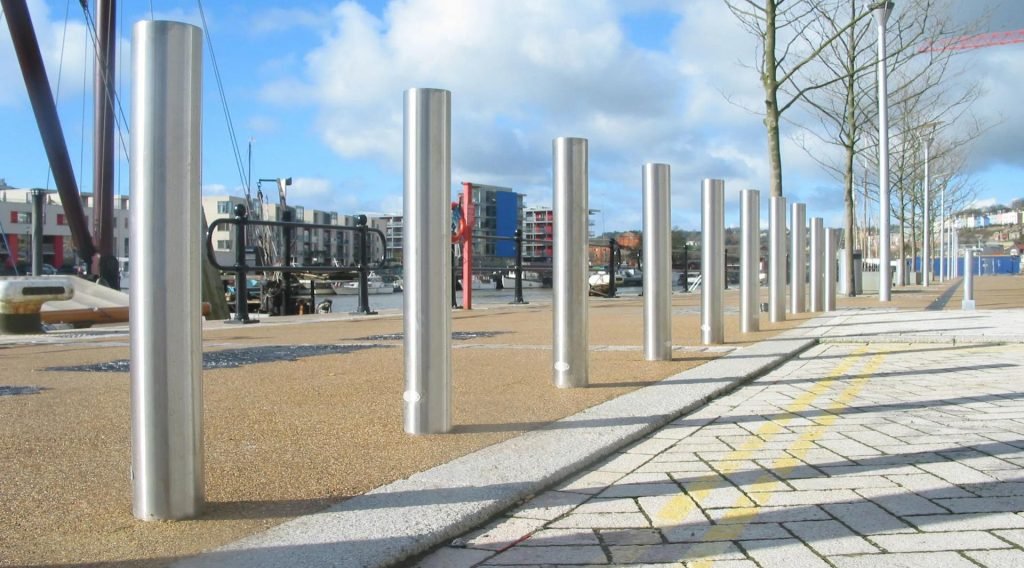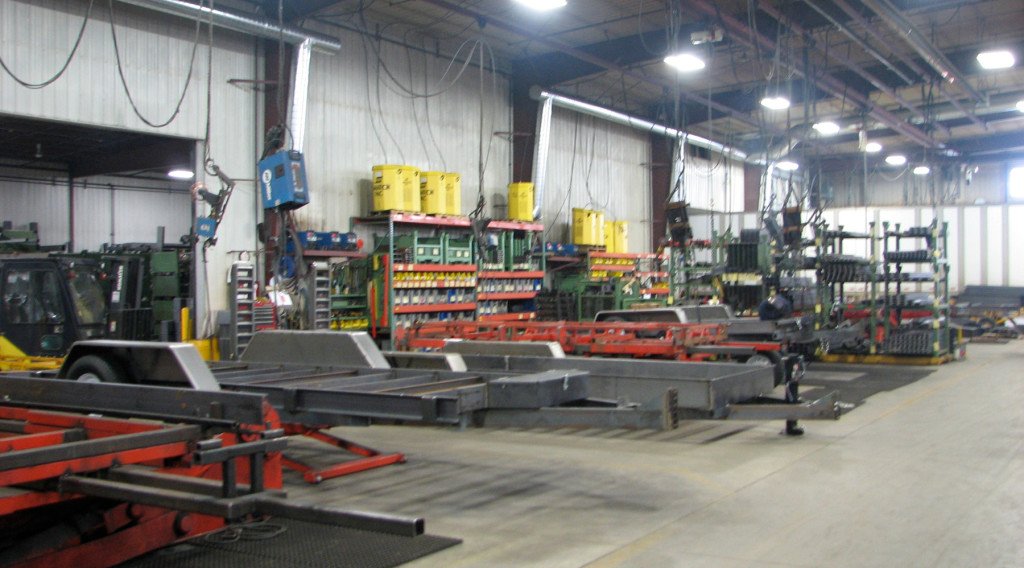In today’s world, ensuring the safety and security of public spaces has become a paramount concern. One effective solution that helps protect pedestrians, buildings, and infrastructure is the strategic placement of bollards. Bollards are sturdy, vertical posts designed to control and guide traffic, prevent vehicle intrusion, and safeguard public areas from potential threats. This exploration will delve into the role and varieties of bollards, shedding light on their applications, benefits, and the different types available in the market.
The Importance of Bollards in Public Spaces
Public spaces such as sidewalks, parks, plazas, and commercial areas are vulnerable to various risks, including vehicle attacks, accidental collisions, and unauthorised access. Bollards are crucial in mitigating such risks by providing physical barriers and channelling traffic flow. These sturdy structures act as guardians, ensuring the safety and security of pedestrians and properties.
Versatile Applications of Bollards
Bollards find applications in a wide range of settings, including:
- Traffic Control: Bollards are often used to regulate traffic, direct vehicle movement, and delineate pedestrian areas. They help maintain order and prevent congestion, particularly in high-traffic zones and intersections.
- Perimeter Security: Bollards are the first defence against unauthorised vehicle access, protecting critical infrastructure, government buildings, and sensitive areas. They serve as a deterrent, preventing threats such as ramming attacks or accidental collisions.
- Pedestrian Safety: Bollards enhance pedestrian safety by separating sidewalks from vehicle lanes. They create a physical barrier that prevents errant vehicles from encroaching into pedestrian zones, reducing the risk of accidents and ensuring a safer environment for pedestrians.
Types of Bollards and Their Features
Bollards come in various types, each designed to cater to specific requirements. Some common types include:
- Fixed Bollards: These are permanent fixtures embedded into the ground. They offer robust protection and are ideal for high-security areas where constant vehicle access control is necessary.
- Removable Bollards: Removable bollards provide flexibility, enabling controlled access when needed. They are often used in areas that require occasional vehicle entry, such as emergency vehicle access points or temporary event spaces.
- Retractable Bollards: Retractable bollards can be raised or lowered as required. They are commonly used in areas that need periodic access for authorised vehicles, such as delivery zones or restricted parking areas.
Factors to Consider When Choosing Bollards
When selecting bollards for a specific application, several factors should be considered:
- Security Level: The level of security required should be assessed to determine the appropriate bollard type. High-security areas may require crash-rated bollards, while lower-risk regions only need standard security bollards.
- Design and Aesthetics: Bollards should blend harmoniously with the surrounding environment. Consider the architectural style, landscaping, and overall aesthetics of the area when choosing bollards to ensure a cohesive look.
- Accessibility Requirements: Accessibility should be considered to ensure compliance with regulations. Bollards should not obstruct pedestrian pathways or impede the movement of individuals with disabilities.
Innovations in Bollard Technology
Bollard technology has seen significant advancements in recent years, resulting in innovative solutions that offer enhanced functionality and improved performance. Some notable innovations include:
- Automatic Bollards: These hydraulic or pneumatic systems enable automated raising and lowering. They can be controlled remotely or integrated with access control systems, providing seamless and convenient traffic management.
- Illuminated Bollards: Illuminated bollards incorporate LED lights, making them highly visible during nighttime or low-light conditions. It improves safety by ensuring pedestrians and drivers can quickly identify and navigate their surroundings.
- Anti-Terror Bollards: With the rising concern of vehicle-based attacks, anti-terror bollards have emerged as a specialised solution. These bollards are engineered to withstand high-velocity impacts, providing maximum protection against ramming attacks.
The Future of Bollards
As the need for safety and security evolves, bollards will likely play an even more significant role. Here are a few trends that may shape the future of bollard technology:
- Integration with IoT: Bollards may become an integral part of the Internet of Things (IoT) ecosystem, connecting with other smart devices and systems to enhance situational awareness and response capabilities.
- Sustainable Materials: With a growing emphasis on sustainability, bollards may be constructed using eco-friendly materials and incorporate renewable energy sources, such as solar panels, for illumination and power requirements.
- Advanced Sensors and AI: Bollards equipped with advanced sensors, artificial intelligence, and machine learning algorithms can proactively detect and respond to potential threats, further enhancing security measures.
Conclusion
Bollards serve as the guardians of our public spaces, ensuring the safety and security of pedestrians, vehicles, and critical infrastructure. With their versatile applications, various types, and innovative advancements, bollards have become indispensable tools in managing traffic, preventing unauthorised access, and protecting against potential risks. As technology advances, bollards are poised to evolve further, integrating with intelligent systems and offering enhanced functionality. By understanding the role and varieties of bollards, we can make informed decisions when it comes to implementing adequate safety measures in our public spaces, creating environments that are secure, accessible, and visually appealing for everyone to enjoy.



